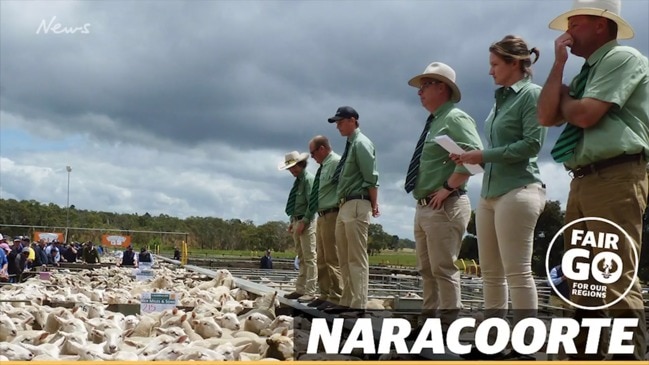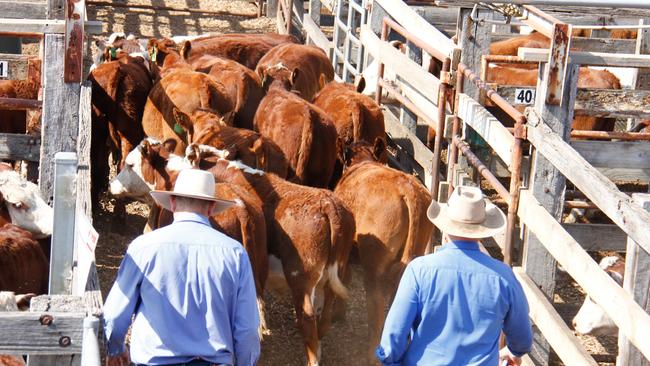Coronavirus could lead to logistics issues for ag sector
Coronavirus has shut down Australia’s rock lobster industry but Chinese appetite for the nation’s meat remains strong.

SA Business
Don't miss out on the headlines from SA Business. Followed categories will be added to My News.
- Technology helping farmers deal with climate change
- Prizes, discounts, freebies: Check out the latest subscriber rewards
Coronavirus has not dampened China’s appetite for Australian meat, but it could lead to logistical issues for the agriculture industry in the future, according to a NAB report.
The NAB Rural Commodities Index report, to be released today, recorded its largest monthly rise since mid-2016, lifting 4.6 per cent in January, driving by cattle and lamb prices.
NAB agribusiness economist Phin Ziebell said Chinese wholesale meat prices have increased since the virus breakout, and strong demand for Australian product continues.
But, Mr Ziebell said coronavirus could lead to logistical problems with moving product to and within China.
“Around a quarter of our total agricultural exports go to China with the majority of these shipped,” Mr Ziebell said.
“There are reports of offloading and distribution issues, and while Chinese wholesale meat prices have increased since the virus outbreak, getting product to market may become challenging and we could see this impact strong processor demand for finished cattle in Australia.
“Australian rock lobster exports have been entirely cut off and any products facing airfreight are also likely to encounter logistical issues.”
Despite coronavirus concerns, livestock prices surged in response to average or above average January rain in key production areas.

“The Eastern Young Cattle Indicator has now reached 623c/kg. While this is the highest price since June 2017 and around 100c below the 2016 record, we are cautious about calling a recovery in cattle prices until there is sustained follow up rain,” Mr Ziebell said.
“Lamb has also received a boost. The National Trade Lamb Indicator sits at 811c/kg and we expect to see continued upside due to drought-constrained supply.”
Mr Ziebell said coronavirus could have an effect beyond just getting product into the Chinese market.
“With Australian pork, a lot goes into Singapore, which is also having issues with coronavirus. So there are a lot of other Asian economies that are important to Australian agriculture that could be affected,” he said.
“It’s certainly not something to be underestimated.”
But Australia’s wool market has improved, with the Eastern Market Indicator sitting at $15.77/kg at the end of January.
“Our dependence on Chinese demand does leave the wool price exposed to the impacts of coronavirus and on balance we have wool price risk weighted on the downside,” Mr Ziebell said.
“I see some further risks if there’s meaningful disruption to manufacturing in China.”
MORE NEWS
Lower tonnages expected for SA vintage
Work of rural women celebrated
Mr Ziebell said concerns about coronavirus put a dent in recent Global Dairy Trade auction results, which fell 4.7 per cent in USD terms in February. But, Australian grain continues to trade well above international benchmarks and feed prices remain high by world standards.
“The NAB feed grain price index averaged $312/t in January, up 4.3 per cent on December but 13.6 per cent lower than a year ago,” Mr Ziebell said.
“Following dismal yields this season, we don’t see much downside here until there is a good break.”
Fruit prices fell 8.1 per cent in January, while vegetables were up 13.9 per cent.
The AUD is currently sitting around USD0.67, with NAB forecasting an increase to USD0.71 by the end of 2020.
